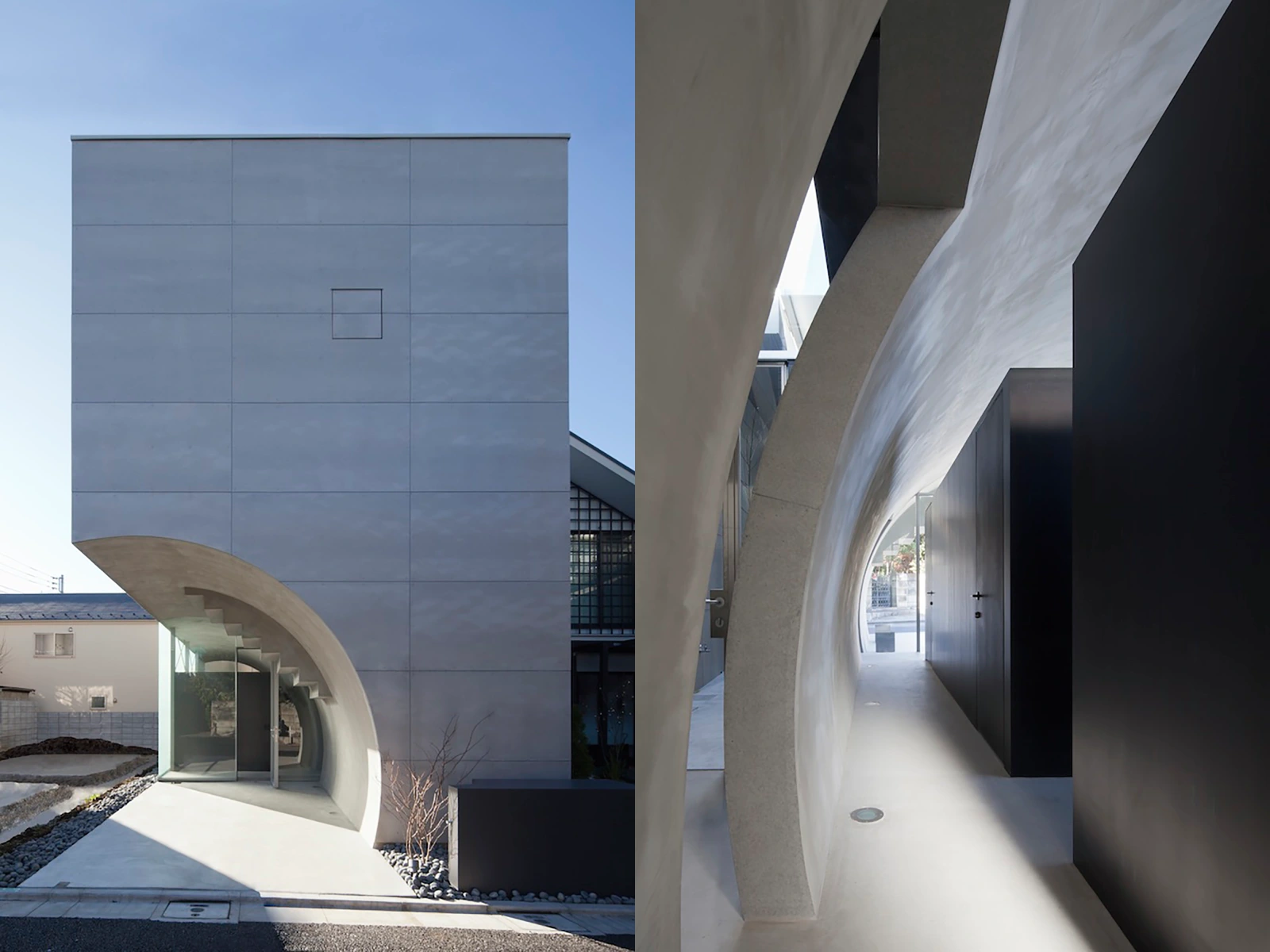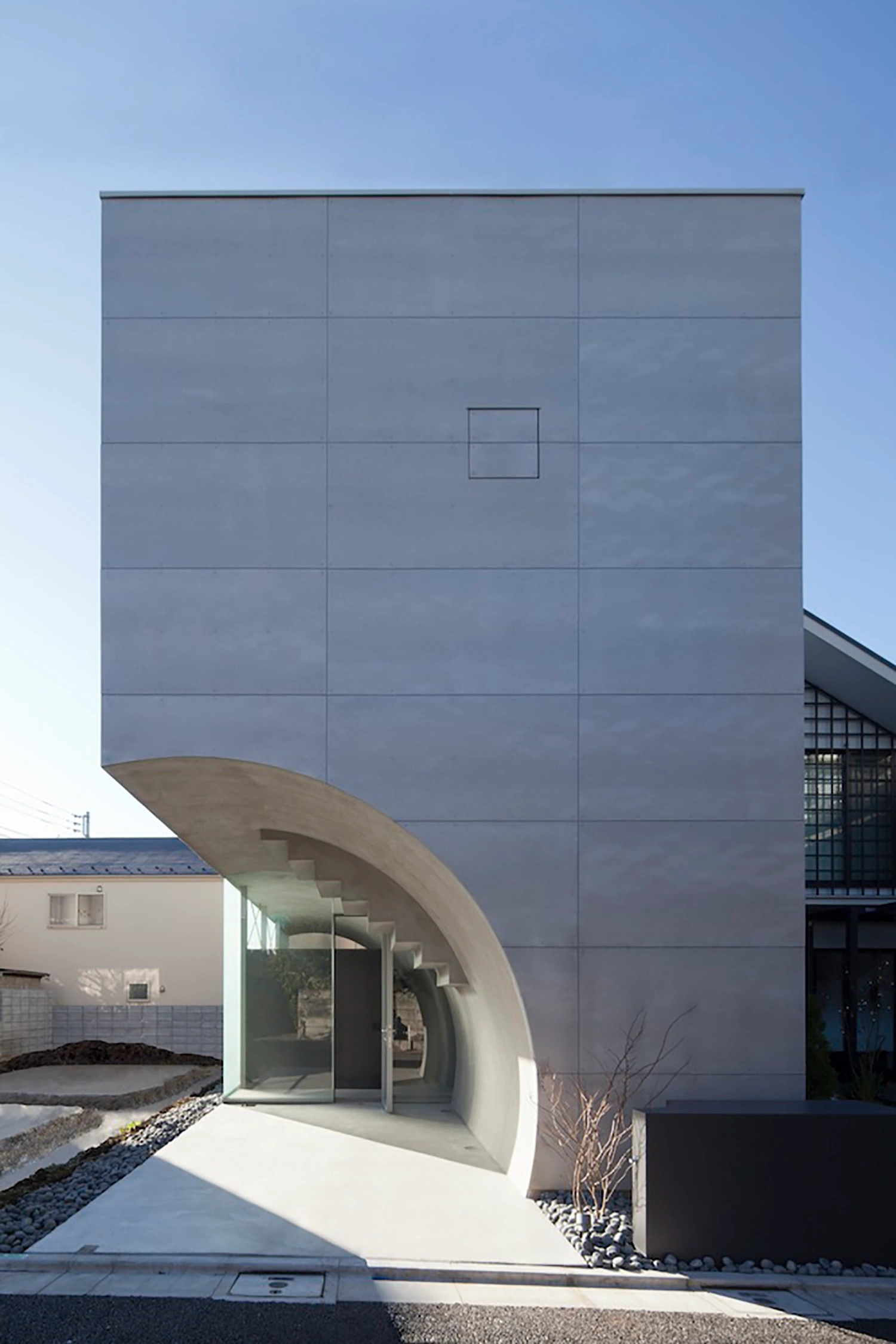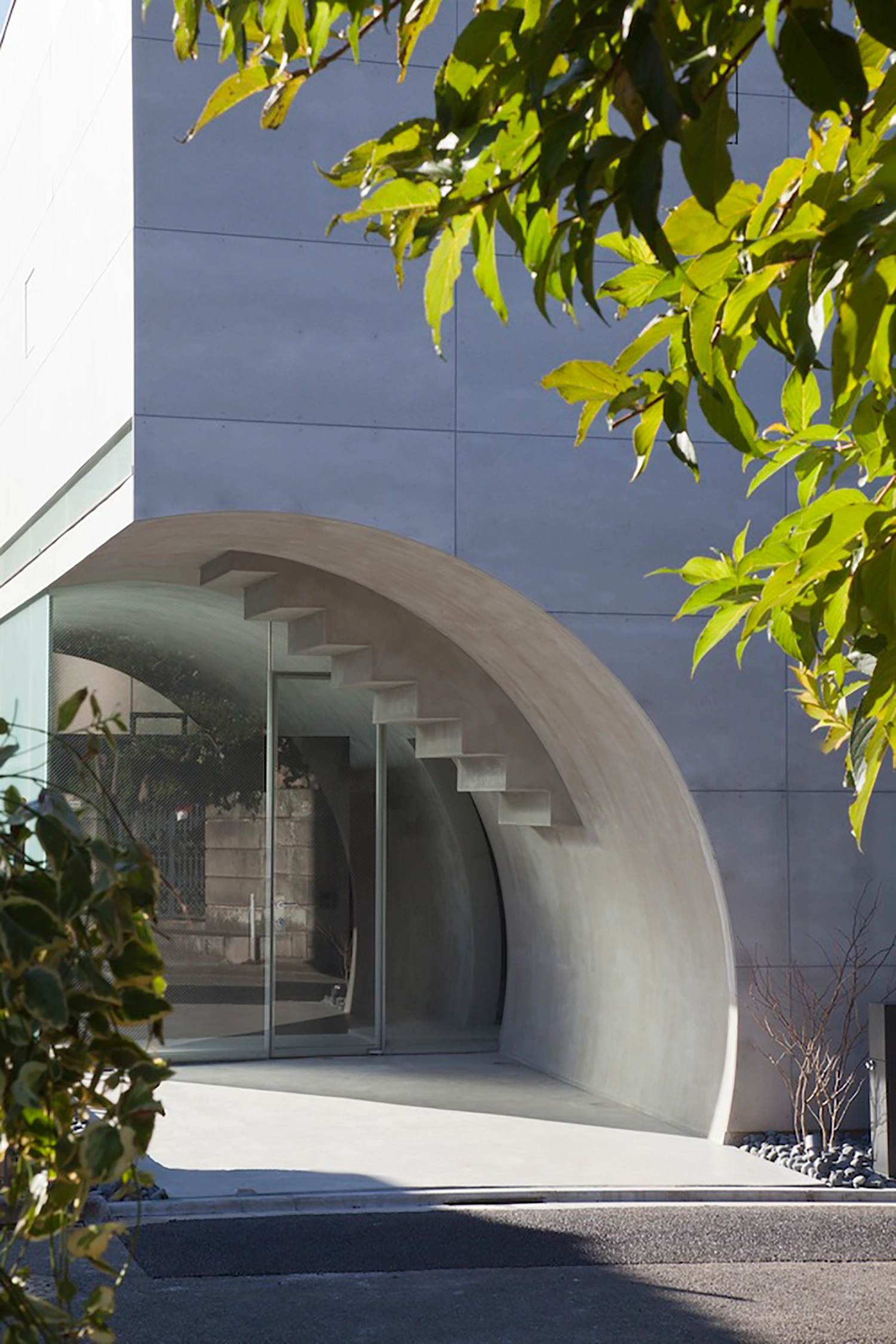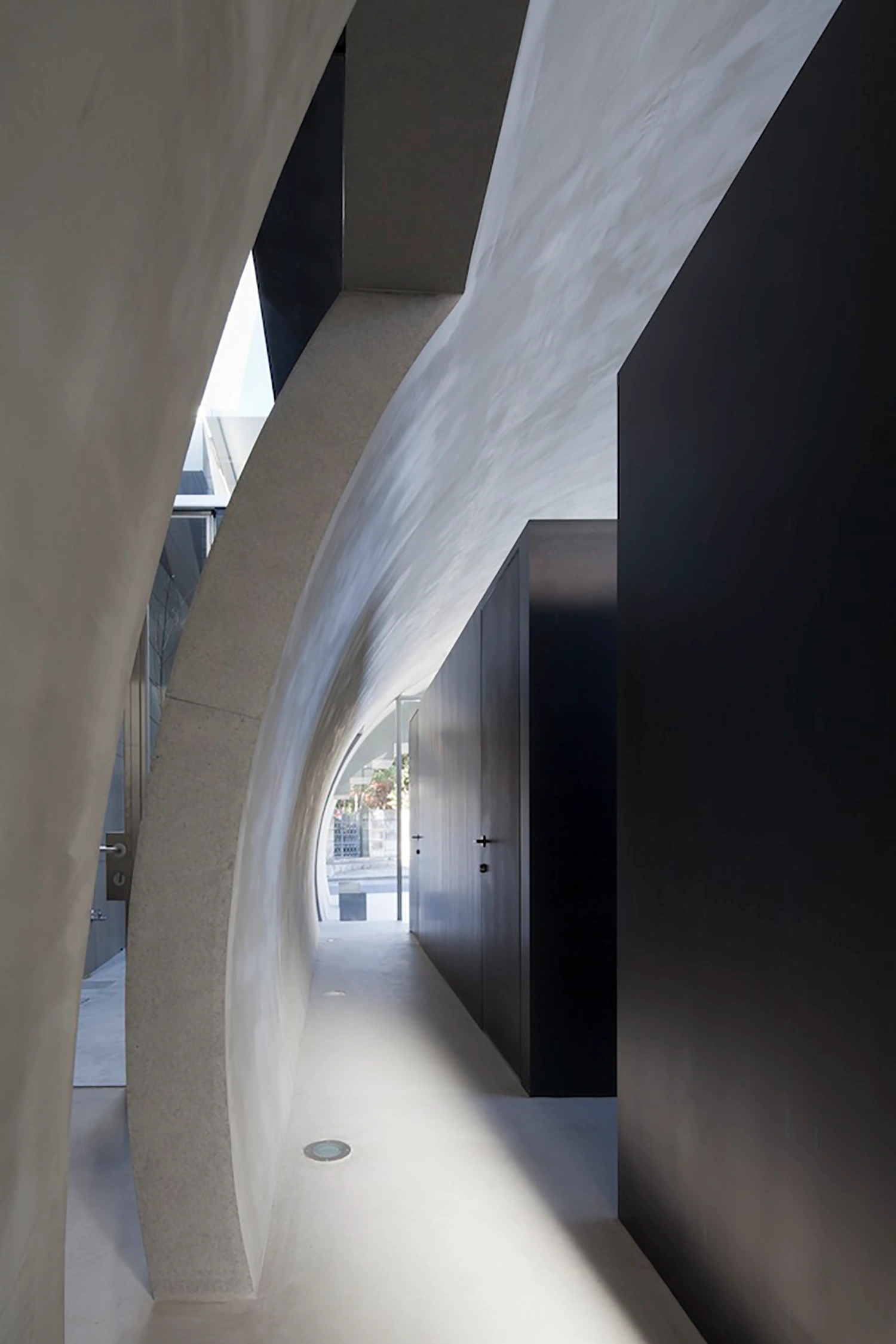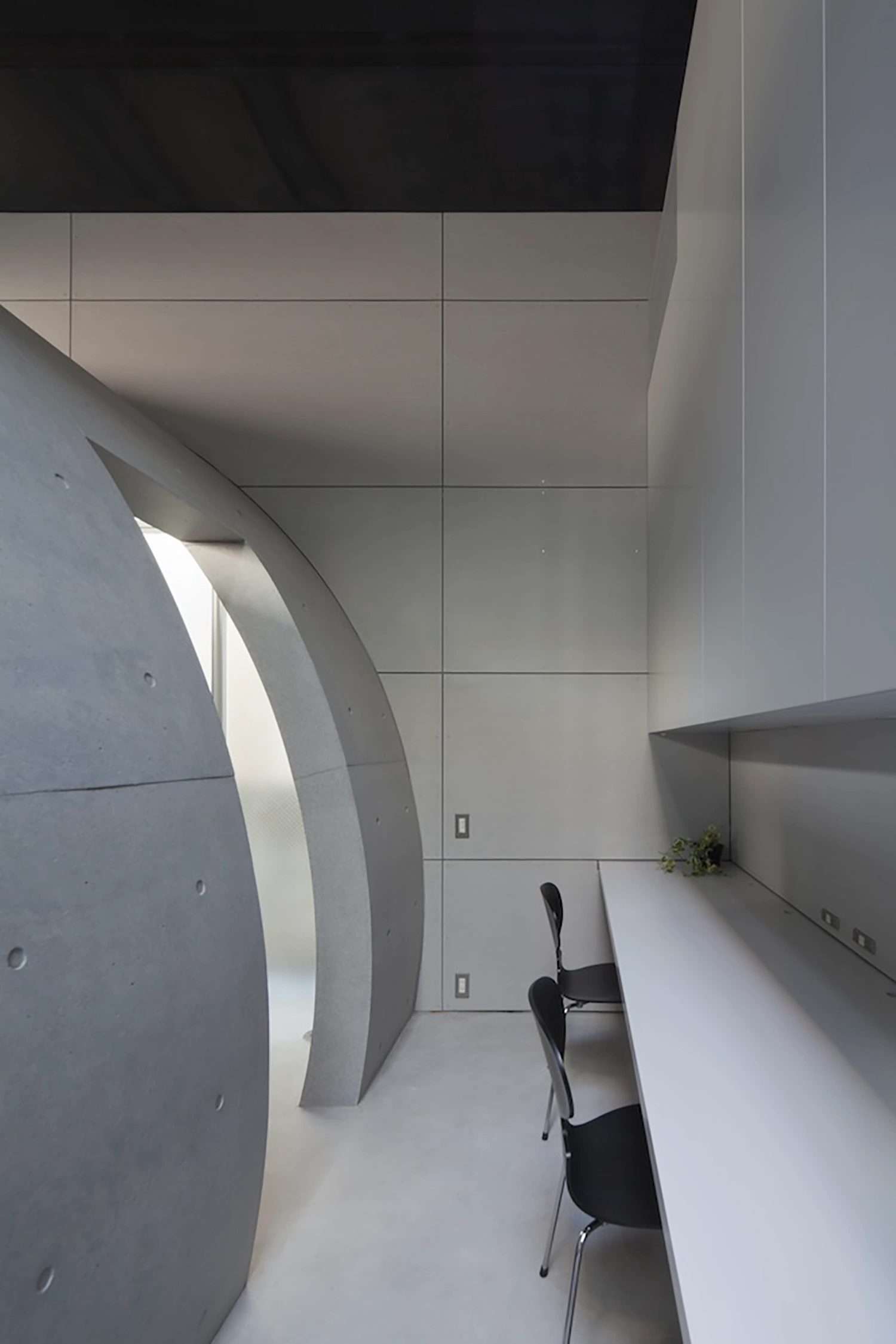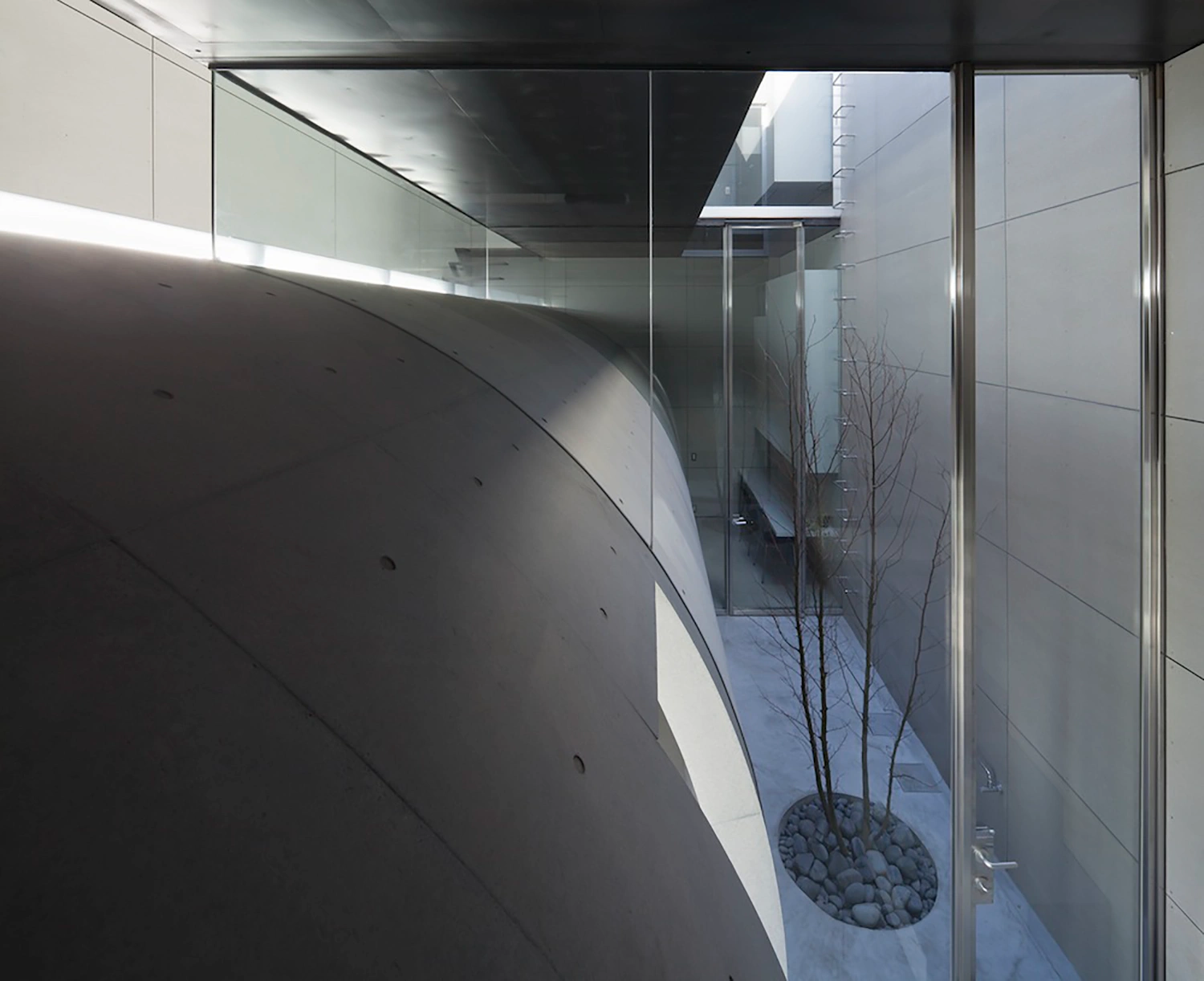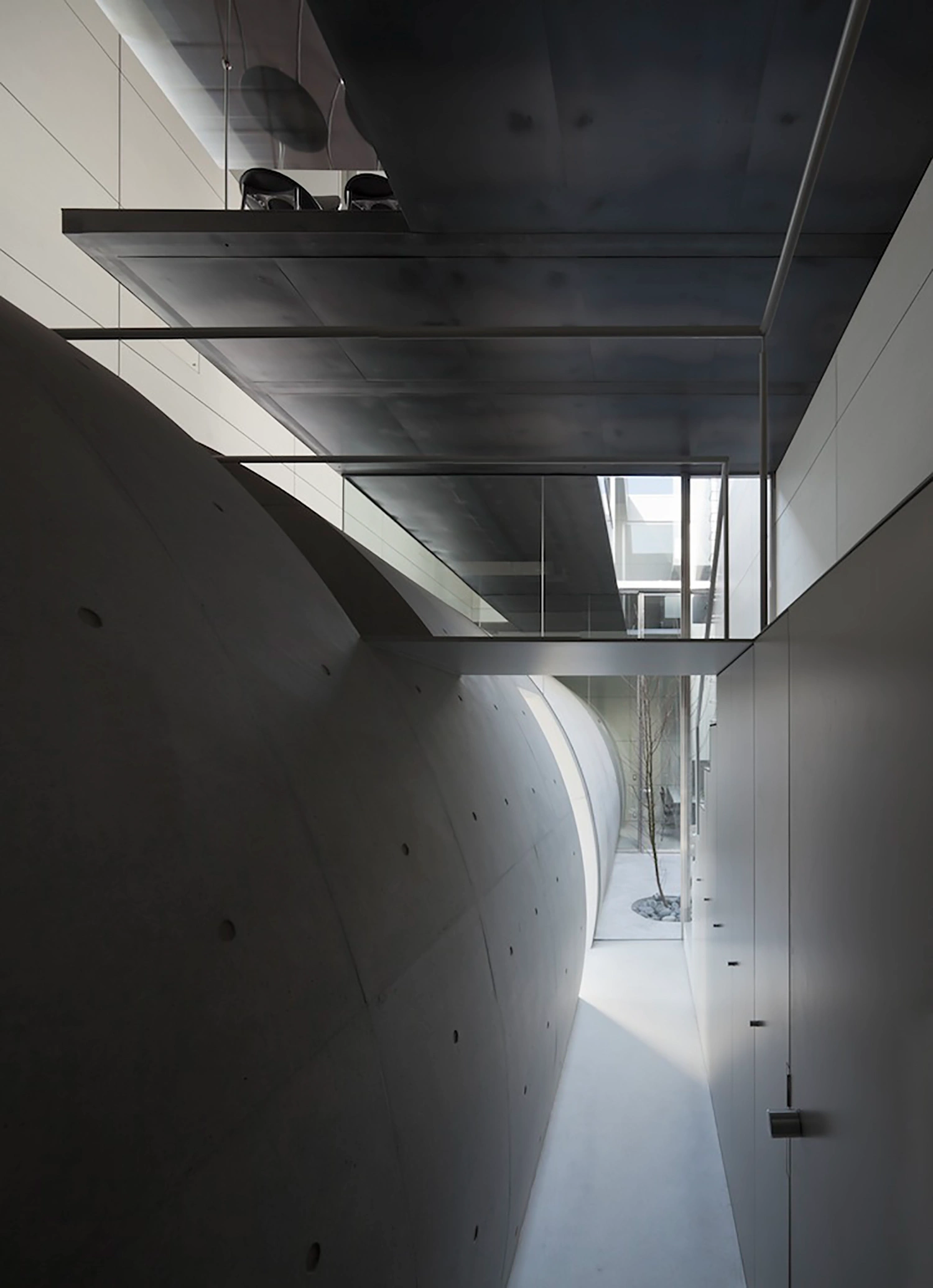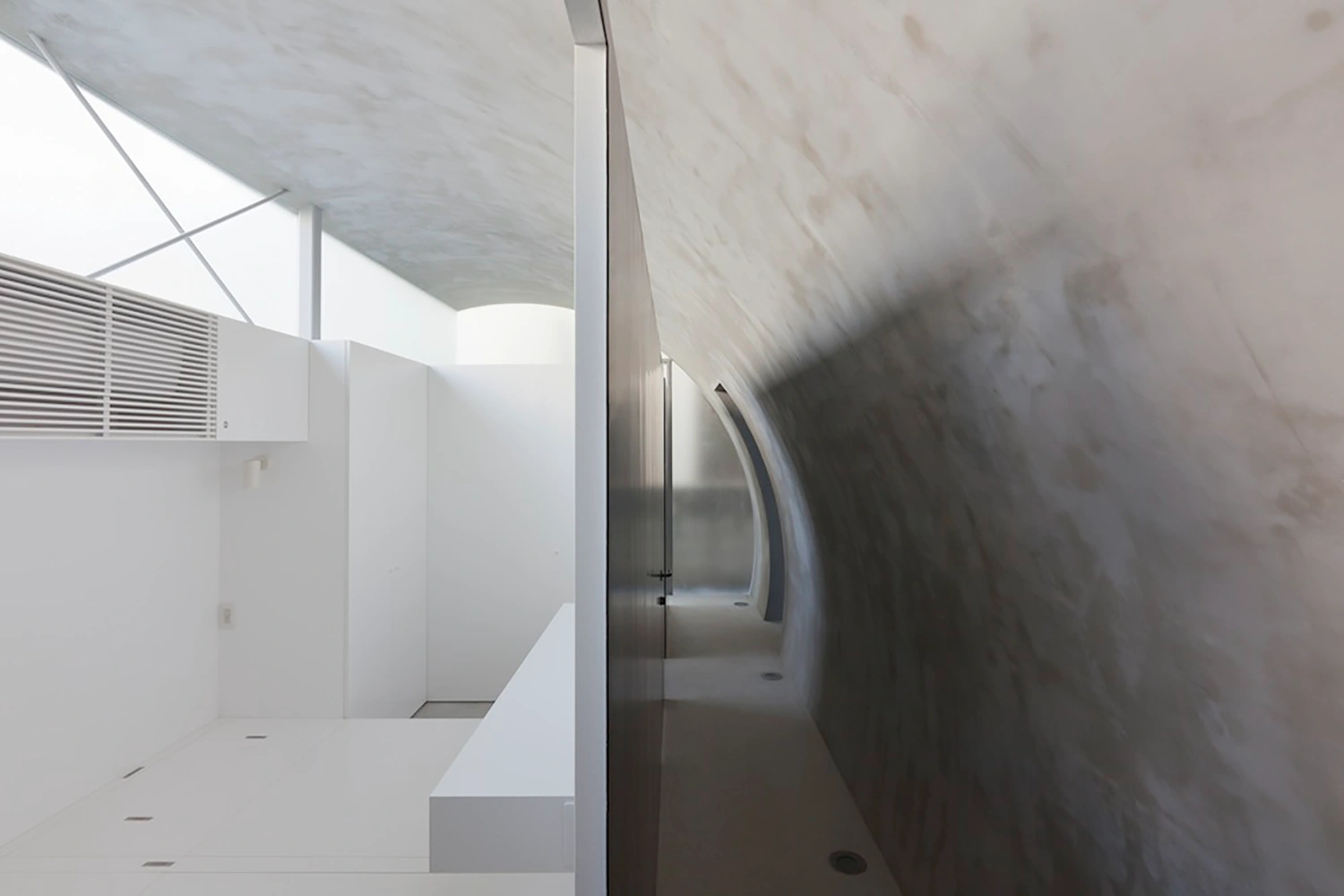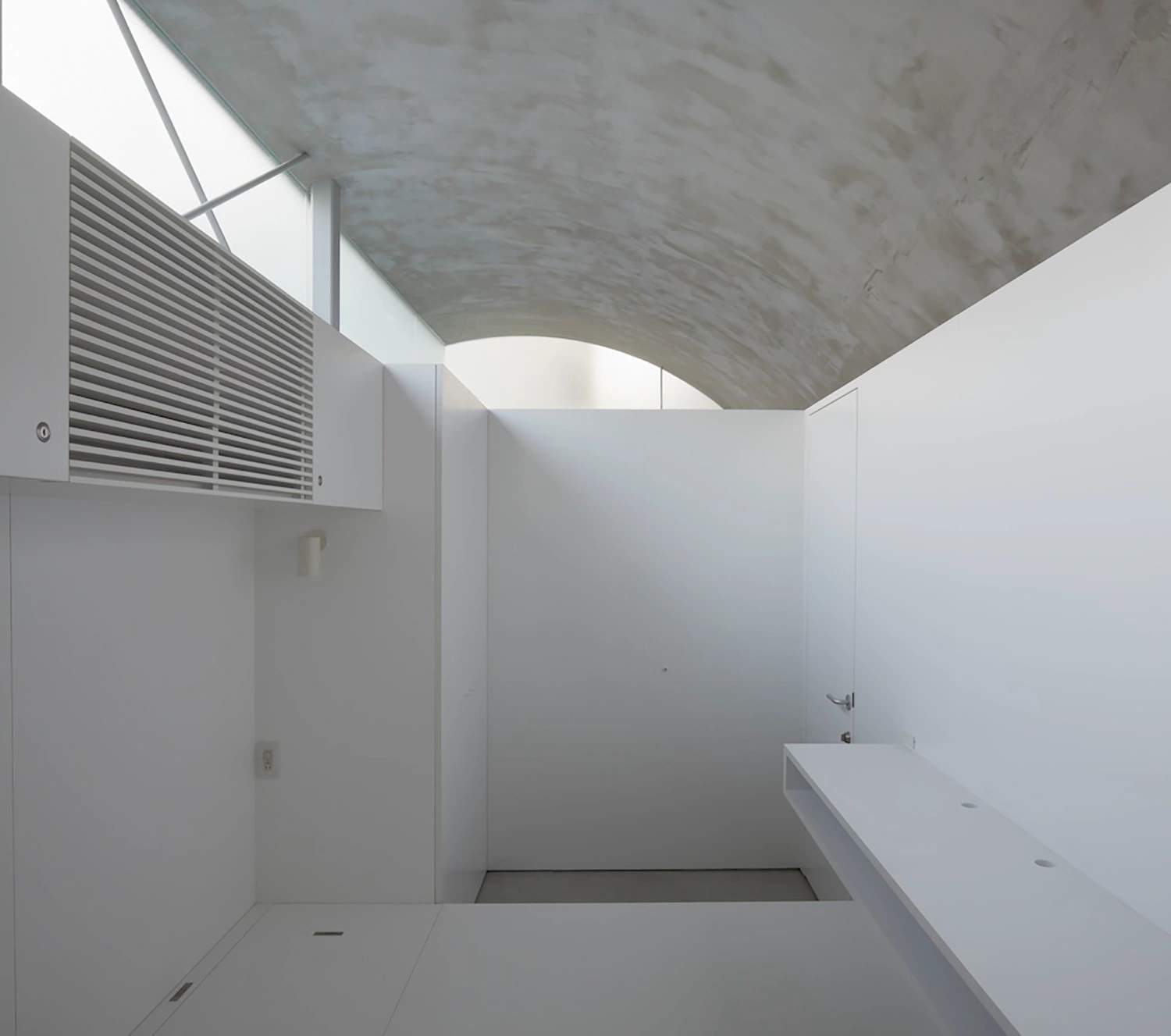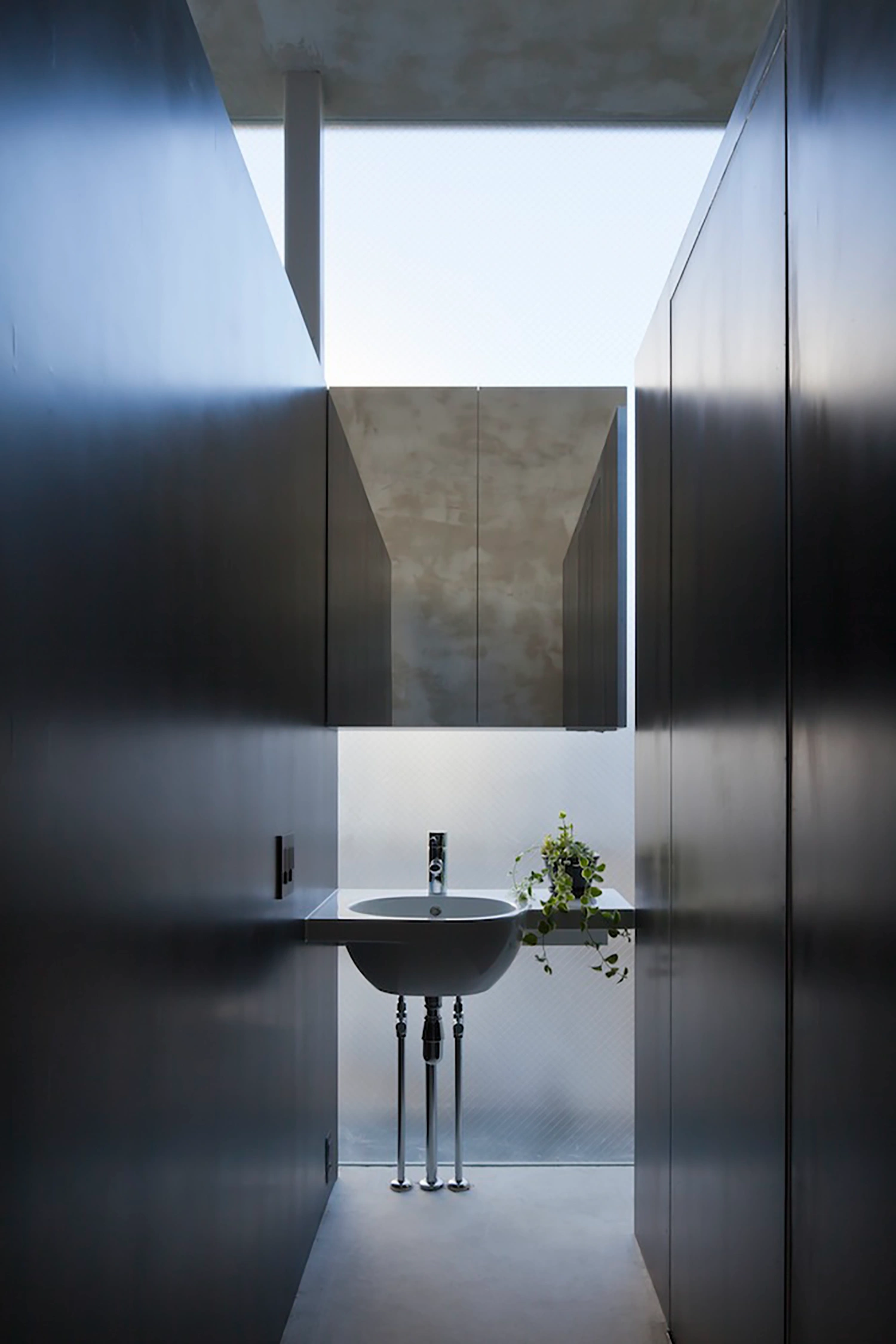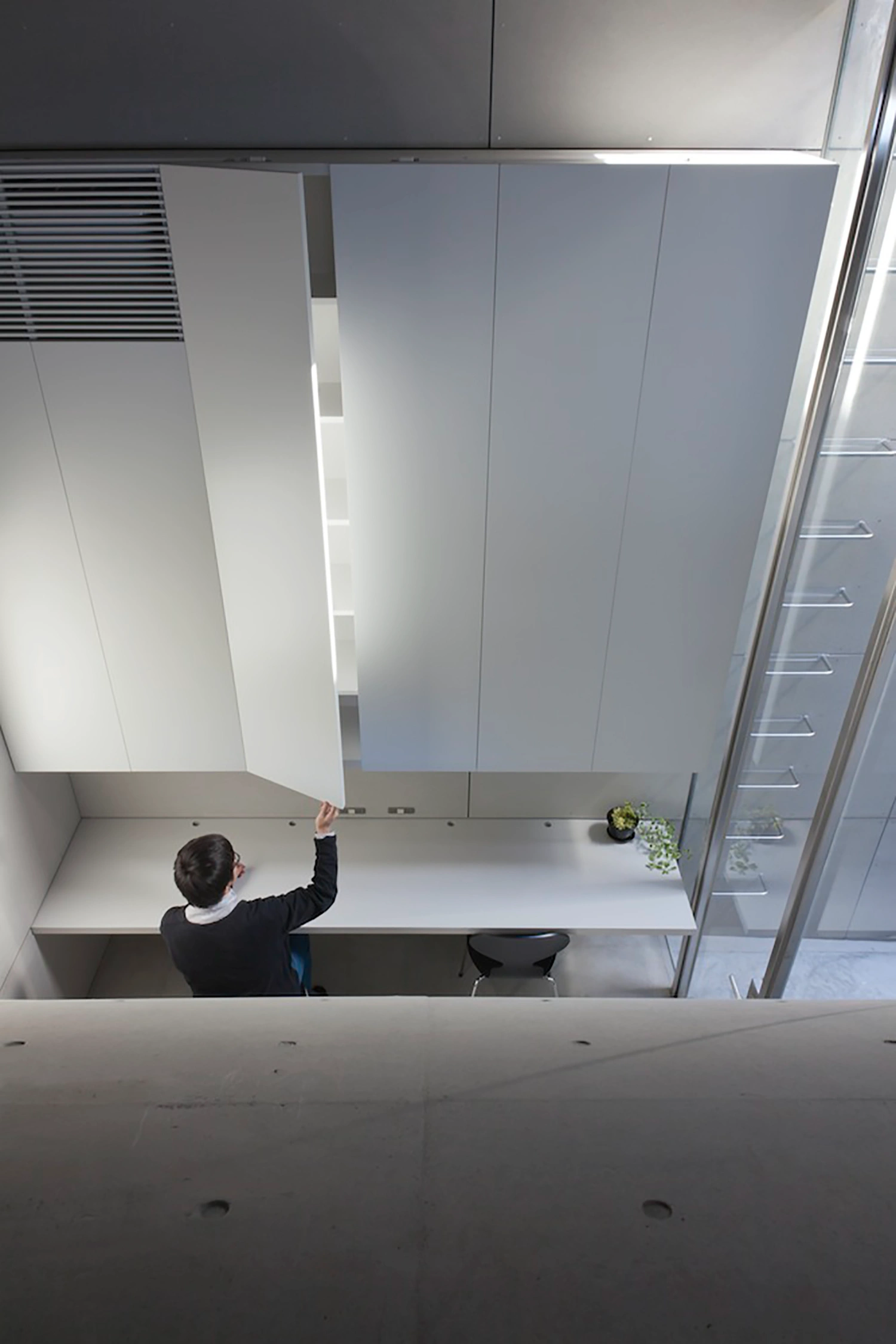At the edge of a quiet Suginami street, where the road meets a T-shaped terminus, Makiko Tsukada Architects have constructed a domestic experiment: a house that turns the boundary between interior and exterior into an architectural event.
The Tunnel House, completed in 2011, is both a dwelling and a visual continuation of the street itself—a gesture that extends urban rhythm into private space, transforming the house into a kind of virtual crossroad.
The project’s central gesture—a quarter-cylinder void carved through the structure—creates a spatial dialogue between “uchi” (inside) and “soto” (outside). This tunnel, enclosed on one side by glass, functions as a luminous artery connecting the street to the home’s interior. Within it, two small box volumes—a bedroom and a bathroom—float like vessels moored within a current of light. The bedroom, enclosed by translucent screens and open to the ceiling, offers a paradoxical experience: a room that feels both intimate and exposed, where one gazes outward into what seems like a landscape rather than a living space.
As daylight cascades down the tunnel’s curved surface through an oblong skylight and courtyard, the result is a choreography of shifting illumination. The light intersects in three dimensions, redefining spatial perception from hour to hour. Ascending the stairs, the visitor encounters mirrored surfaces and a floating steel floor—each reflection and suspension contributing to a sense of disorientation. The super-thin six-millimeter tabletop amplifies this effect, giving the illusion of material dematerialization, a moment of architecture dissolving into perception.
The Tunnel House resists categorization as merely a residential project. It is an exploration of thresholds—between private and public, solid and void, perception and reality. Visitors describe the experience as spatial betrayal: feeling outdoors while standing inside. This deliberate confusion, cultivated through the careful manipulation of light, form, and reflection, creates not just a home but a phenomenological journey. Tsukada’s design invites occupants to question where architecture ends and atmosphere begins.

